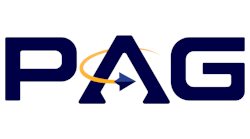We’ve all heard the old adage, “You’re only as strong as your weakest link.” But like many clichés, there’s a great deal of truth in it, especially as it applies to your risk management strategy and your supply chain. You have a great deal of control over what happens in your operations, but what about your vendors, and your sub-vendors? What do they do to control risk, and how does that affect you?
In the aviation supply chain, risks abound – they surround us. If you subcontract repairs as part of your MRO operations, for example, you rely on the sub-vendor to take the care and consideration to perform their work safely and correctly. But how much do you know about their quality control procedures? Do you require that they adhere to your own quality standards? Do you include risk management information in your quality survey?
Vendor surveys
I’ve reviewed many a vendor survey during my years in the aviation aftermarket industry. Many companies view them as a mere formality and do not give them the attention these important documents deserve. Your vendor survey gives you the best opportunity to evaluate what your vendors are doing for quality control and how they are mitigating risk. With these surveys, you can ask the questions that allow you to see how a vendor matches up to your own quality controls and risk management goals and procedures.
As part of the survey process, this is a good time to verify that your vendors meet your customers’ quality requirements as well. The very worst time to find out one of your subcontracted shops is not on your customers’ approved list is when the customer rejects a key part. You can avoid that ugly but all-too-frequent occurrence by doing your homework in advance. This applies to aftermarket parts purchases as well.
Next, put a time limit on vendor approvals. This will help ensure that your vendors are keeping up with quality audits. Ask your vendors about returns they have had since you last approved them, and ask how they resolved those returns. This information on returns and rejections can serve as a key indicator of their quality control performance, and how well they adhere to their quality manual.
Aviation products liability insurance
Finally, ask your vendors if they are carrying aviation products liability insurance, and how much coverage they have. You do not have to require this insurance, but vendors who carry it will reduce your risk. If vendors do not carry insurance, and they are performing work for you, you are essentially insuring these vendors. For vendors who are performing any assembly, we strongly suggest you require them to carry aviation products liability coverage not only for your protection but for theirs as well.
Strengthening the risk management profile throughout your supply chain via quality surveys and aviation products liability insurance requirements will strengthen your own position with underwriters by showing them you are serious about risk management. This can help reduce your exposure and may even improve your premiums.
Your risk management is only as strong as the weakest link in your supply chain. Don’t forget to regularly test those links with regular quality surveys and updates, to keep your chain, and your operations strong.
Jamie Benthusen is the director of aviation products liability for NationAir Aviation Insurance, one of the country’s oldest and largest aviation insurance specialty brokerages. Benthusen has more than 15 years’ experience in sales and manufacturing for airframe and engine products and test equipment.



